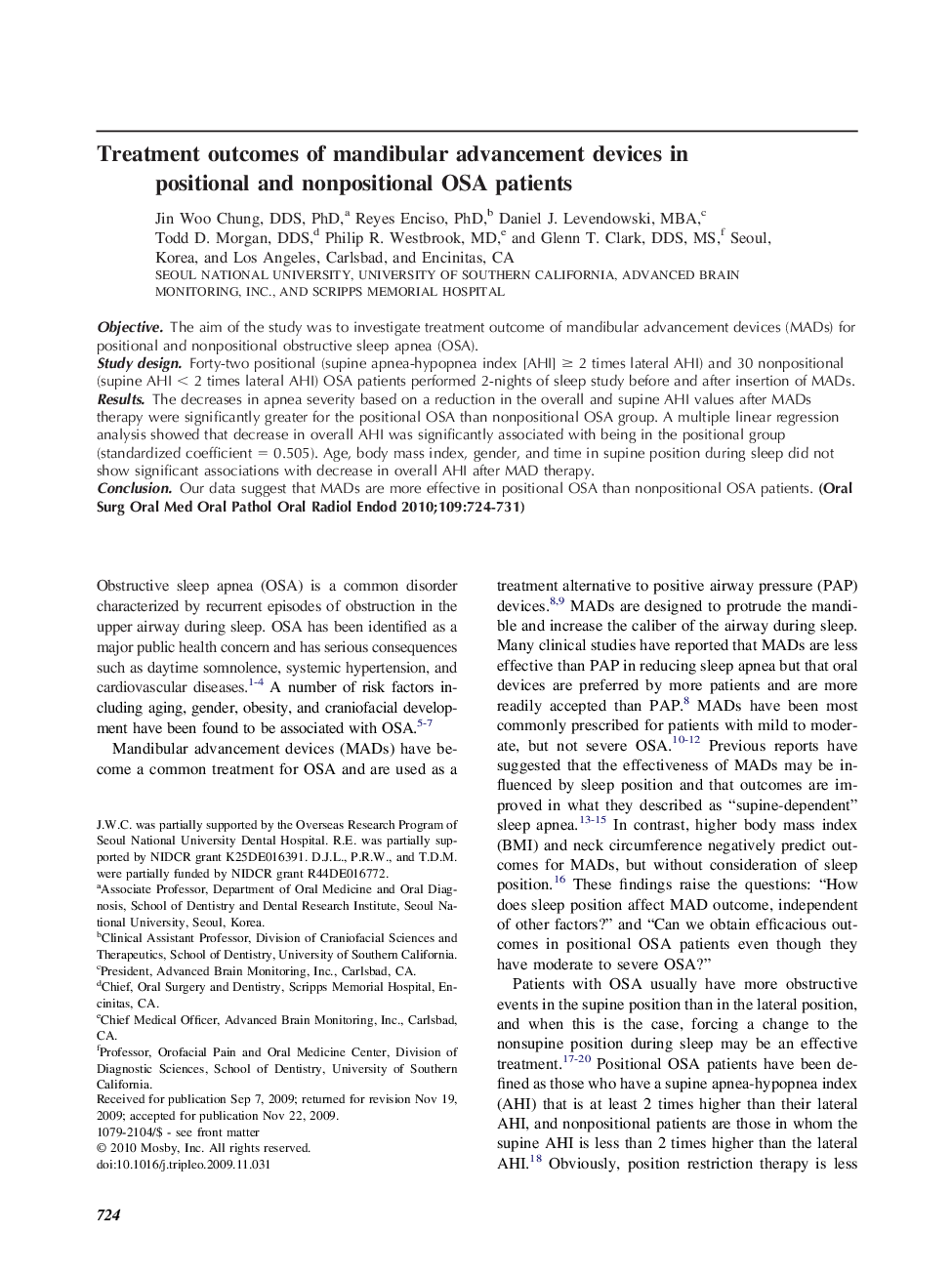| Article ID | Journal | Published Year | Pages | File Type |
|---|---|---|---|---|
| 3167639 | Oral Surgery, Oral Medicine, Oral Pathology, Oral Radiology, and Endodontology | 2010 | 8 Pages |
ObjectiveThe aim of the study was to investigate treatment outcome of mandibular advancement devices (MADs) for positional and nonpositional obstructive sleep apnea (OSA).Study designForty-two positional (supine apnea-hypopnea index [AHI] ≥ 2 times lateral AHI) and 30 nonpositional (supine AHI < 2 times lateral AHI) OSA patients performed 2-nights of sleep study before and after insertion of MADs.ResultsThe decreases in apnea severity based on a reduction in the overall and supine AHI values after MADs therapy were significantly greater for the positional OSA than nonpositional OSA group. A multiple linear regression analysis showed that decrease in overall AHI was significantly associated with being in the positional group (standardized coefficient = 0.505). Age, body mass index, gender, and time in supine position during sleep did not show significant associations with decrease in overall AHI after MAD therapy.ConclusionOur data suggest that MADs are more effective in positional OSA than nonpositional OSA patients.
